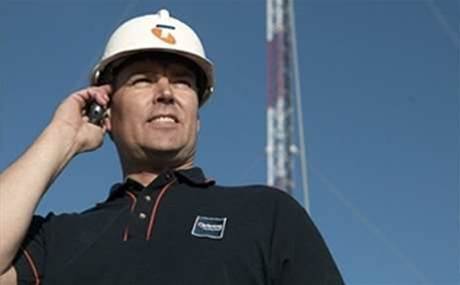Telstra has deepened its commitment to 5G mobile networking, demonstrating its first trial of the technology publicly at its network operations centre in Melbourne yesterday.

The technology, which promises Gbps speeds to mobile users, is still at least four years away from reaching commercial maturity and controversy remains over its uses.
However, Telstra was yesterday able to conduct a 5G demonstration that showed it was capable of speeds up to 10Gbps over a short line-of-sight using 800Mhz of spectrum in the 15GHz band.
It claims to have achieved up to 20Gbps in other testing.
The technology uses so-called “beam forming” made possible by dense clusters of small antennas operating in high spectrum to track and deliver mobile signals to devices in a targeted manner, greatly increasing the efficiency of the spectrum’s use.
For example, a 4G LTE mobile broadband tower using 20Mhz of spectrum in a lower frequency band can deliver about 1.4 Gbps for every available Hz of spectrum for each user in its range.
Theoretically, beam forming technology could deliver the same speed for each available Hz of spectrum but also be able to utilise large tracts of the less valuable high frequency spectrum up to 1000MHz, making much greater capacity available per user at a lower cost.
Telstra provided a crude demonstration of how the technology could steer a radio spectrum beam at a Telstra vehicle containing a 5G receiver around a small area of the car park at its Clayton, Victoria NOC facility for media.
Telstra’s networks chief Mike Wright said the technology was expected to help address an anticipated five-fold increase in demand for broadband traffic by 2020, which is when 5G technology is expected to reach commercial maturity.
“We get a lot more efficiency because we’re only sending energy to where the users are and not sending it over other users,” Wright said, referring to the way that 4G LTE cells currently share capacity evenly across multiple users regardless of their real-time location.
Wright said the technology would most likely start to show its value as demand for high quality video content consumption grew, such as the broadcast of events in 4K, 8K and High Dynamic range quality. The carrier is anticipating that media content will account for 80 percent of its network traffic within five years.
He also believed it could play a role in the growing popularity of high-bandwidth virtual reality applications.
Wright said it was too early to say whether 5G technology would provide fixed-wireless means to bypass the NBN.
“The NBN uses some wireless today and usually what you’re looking at is a trade-off of cost versus areas and (population) density. It’s too early to say where those cross over points will be …so I think it’s one of those things where we’ll just have to wait and see how the technology evolves and look at the individual cases,” he said.
“No matter what you do you need a hell of a lot of capacity in the ground because of the capacity required. My traditional way of thinking is you can carry the screen it’s okay for wireless and if you can’t you should plug it into the wall and whether 5G can cross that boundary only time will tell."
The 5G mobile equipment Telstra used during the demonstration to approximate a mobile device was about the size of a medium capacity fridge, indicating just how early it is in its stage of development.
UK analyst group New Street recently gave a presentation at an event in Sydney hosted by the Australian Communications and Media Authority (ACMA) in which it warned investors to ignore hype around the technology.
The analyst firm outlined a series of technical limitations with 5G including the lower propagation range of higher spectrum frequencies and their poor ability to penetrate buildings.
New Street said that it expected 5G to be a “complementary technology” to 4G LTE rather than a generational step change in mobile broadband, as had been the case with 4G, 3G and 2G before it.
At the time the firm said that while 5G engineers had made great technical strides, the technology had an endemic economic resistance to fitting into current carrier business models, such as the need for a much greater density of equipment and the potential need to cooperate with rivals.
Next Street senior analyst Andrew Entwistle said carriers were already finding it hard to strike a balance between fending off rivals operating fixed and wireless infrastructure while absorbing backhaul costs associated with short range and wi-fi services against revenue from their core mobile services.
Telstra has already taken steps to upgrade its mobile core network in preparation for the arrival of 5G.
Rival Vodafone is expected to undertake lab trials of 5G technologies later this year.



.png&h=140&w=231&c=1&s=0)
_(20).jpg&h=140&w=231&c=1&s=0)
_(22).jpg&h=140&w=231&c=1&s=0)



_(26).jpg&w=100&c=1&s=0)

 iTnews Executive Retreat - Security Leaders Edition
iTnews Executive Retreat - Security Leaders Edition












_(1).jpg&h=140&w=231&c=1&s=0)



